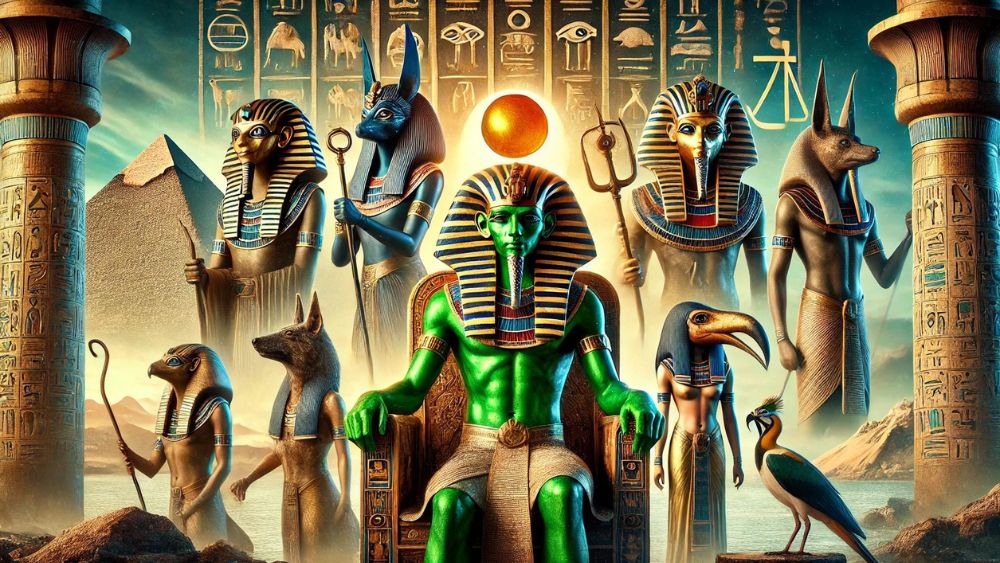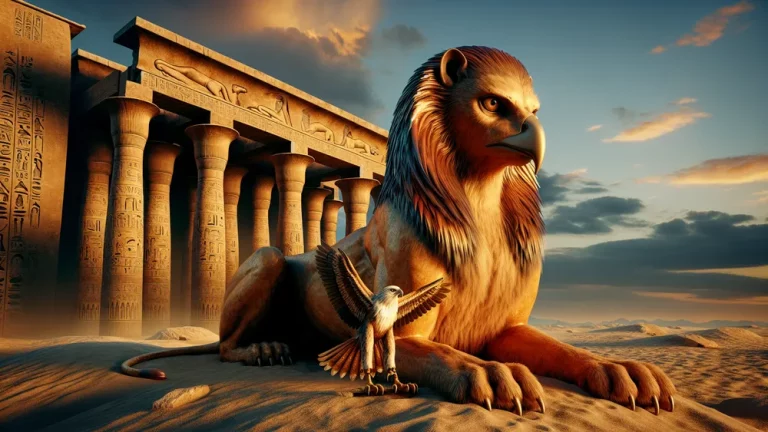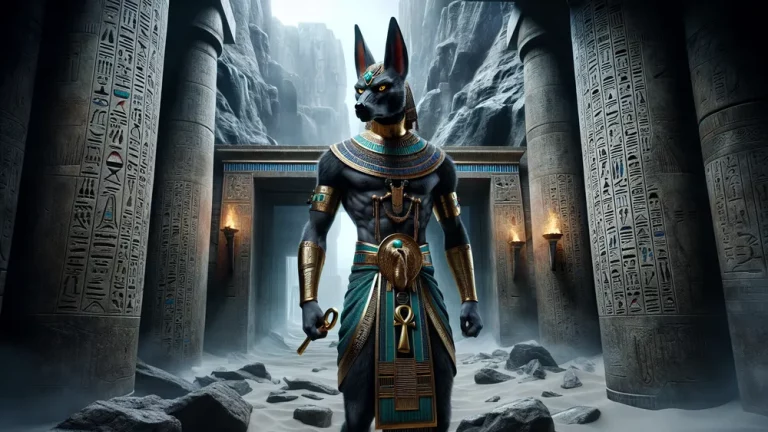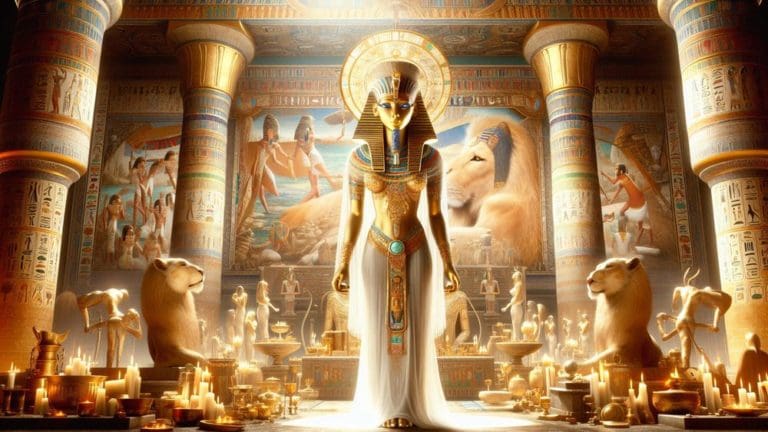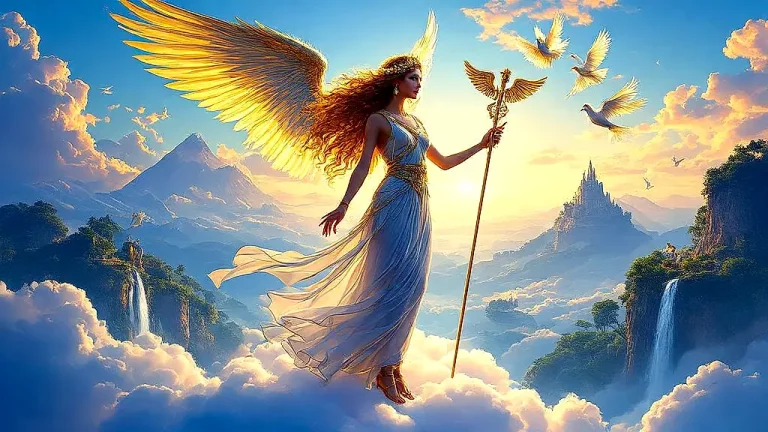15 Most Powerful Egyptian Gods You Should Know
Egyptian stories are like a big and complicated picture, showing the tales of gods and goddesses who were very important in the old world. Think of superheroes, each with special abilities and duties, coming to keep everything in order. This is like the group of Egyptian gods and goddesses, where each had certain places and jobs.
Key Points:
- Ra is the main sun god, symbolizing light and life.
- Osiris is the god of the afterlife, representing rebirth and judgment.
- Isis is a magical goddess and a caring mother to Horus.
- Horus is the falcon-headed god of the sky and kingship.
- Anubis is the jackal-headed god overseeing mummification and the dead.
- Thoth is the ibis-headed god of knowledge and writing.
- Ma’at is the goddess of truth and justice, maintaining cosmic balance.
In this blog post, you will walk through old times to see 15 of the most powerful Egyptian gods you should know. From Ra, the strong sun god who goes through the sky every day, to Nephthys, the caring goddess of the dead, each god and goddess has a big part in the rich stories of Egyptian times.
Whether you are just starting out or you already know a lot, this guide will give you all the main facts about these interesting figures and what they did in old Egyptian society.
The most powerful egyptian gods: Overview and Key Facts
| God/Goddess | Domain | Key Attributes | Importance |
|---|---|---|---|
| Ra | Sun | Sun disk, head of a falcon, boat for the sun | Main god for creating stuff, goes across the sky every day, top god |
| Osiris | Dead, coming back | Green skin and wrapped like a mummy, crook, and flail | Judge of the dead, symbol of rebirth, big part in death practices |
| Isis | Magic, Being a mom | Throne-shaped hat, ankh, wings | Strong magician, Horus’ mom, protector of the dead |
| Horus | Sky, King powers | Falcon head, crown with two parts of Egypt | Pharaoh’s protector, avenger of Osiris, symbol of power for kings |
| Set | Confusion, Storms, Desert | Head of an animal (Set animal), stick, special stick called was-scepter | Chaos symbol, rival of Horus, linked with deserts and storms |
| Anubis | Mummy-making, Dead | Jackal head, flail, scales | Oversees mummy-making, guide souls, graves’ protector |
| Thoth | Knowing things, Writing, Moon | Head of an ibis, writing palette, moon disk | Scribe for gods, made writing, linked to the moon |
| Hathor | Love, song, Being happy | Cow horns, sun disk, rattle | Goddess of love and fun, patron of music and dance, motherly figure |
| Amon-Ra | King power, Thebes | Ram head, sun disk, ankh | King of all gods, patron of Thebes, fusion of Amon and Ra |
| Ma’at | Truth, Justice, Big order | Feather of truth, scales, ostrich feather | Keeps cosmic balance, big in judging the dead, symbol of order |
| Bastet | Home, Babies, Protection | Head of a lioness or cat, rattle, ankh | Protects homes, goddess of having babies, has both lioness and cat nature |
| Sekhmet | War, Healing people | Lioness head, sun disk, stick | Strong warrior, brings plagues, healer of sickness |
| Sobek | Strength, Power, Nile | Crocodile head, ankh, stick | Guards the pharaoh, linked to the Nile, symbol of power |
| Ptah | Making things, Craftsmen | Wrapped like a mummy, djed pillar, stick | Creator god, craftsmen’s patron, important in Memphis |
| Nephthys | Protecting, Dead | House and basket hat, wings, ankh | Dead protector, Isis’ sister, part of funeral stuff |
15 of the Most Powerful Egyptian Gods You Should Know About
Since you now have a general look and key facts about the most powerful Egyptian gods, let’s look deeper into each deity‘s individual stories and importance.
1. Ra: The Main Sun God
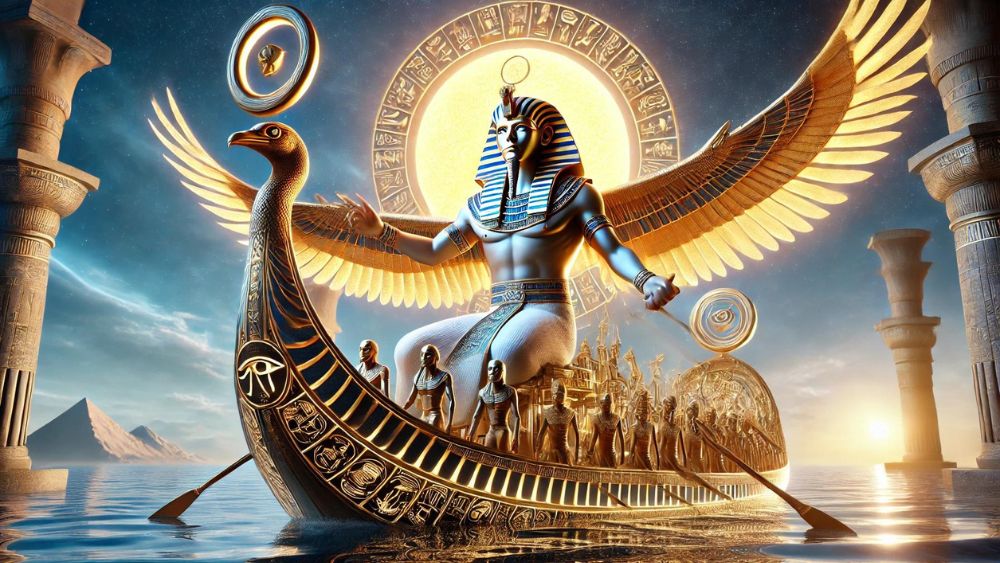
Ra is thought of as the most powerful and big god in old Egyptian stories, shown with a sun disk over his head. Imagine Ra like the main source of light and life, like the sun that goes up and down every day. He goes across the sky every day in his sun boat which shows the life, death, and rebirth cycle.
Ra brought the world into being in the creation story, coming out of the first waters of chaos. His big role is also shown by how he keeps order and balance in the universe, so he is a very important god in the group of Egyptian gods.
Ra is a central figure in Egyptian mythology, symbolizing the sun and maintaining balance in the universe.
2. Osiris: The God of the Afterlife and New Beginnings
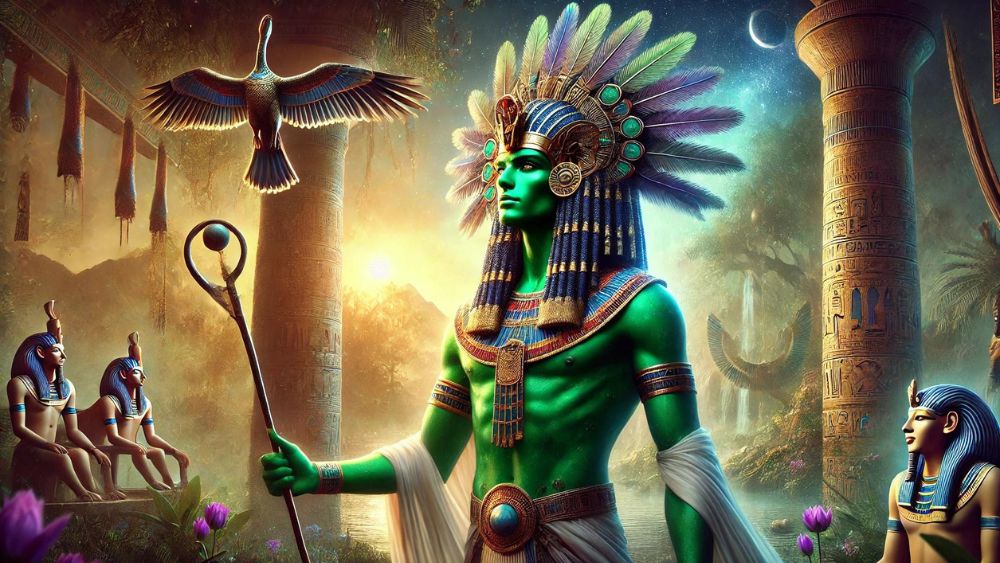
Osiris is known for the afterlife, death, and coming back, and he is important in Egyptian stories. Think of Osiris as a wise and fair decider who watches over the change from life to afterlife. He was killed by his brother Set, cut up, and then put back together by his wife Isis.
In the afterlife, Osiris rules over the judging of souls, and they are judged by weighing their hearts against the feather of Ma’at. His role in Egyptian funeral practices is big, he stands for life after death and the chance to be alive again, and he is central in what people believe about death and afterlife.
3. Isis: The Goddess of Magic and Motherhood
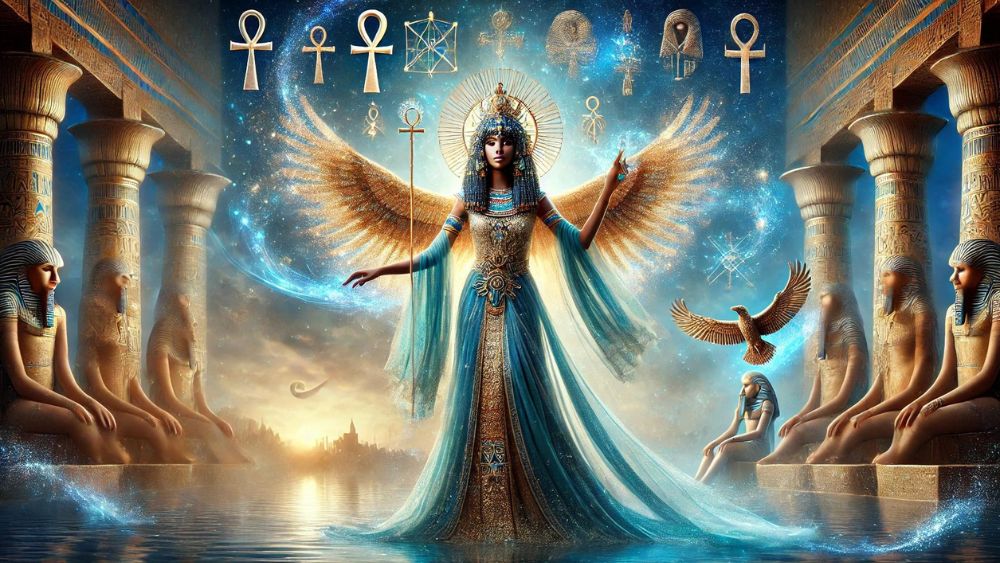
Isis is known for her magic and being a mother to Horus, showing both caring and mystical sides. Think of Isis as a strong sorceress and caring mother, with powers that go beyond normal. Her stories show how resourceful and magical she is, like when she brought her husband Osiris back to life and kept her son Horus safe.
Isis is linked with magic and healing, called upon in spells and rituals for safety and health. Her impact goes beyond old Egypt, this includes Greco-Roman and early Christian traditions, where she was seen as a sign of caring and divine magic.
4. Horus: The Falcon-Headed Sky God
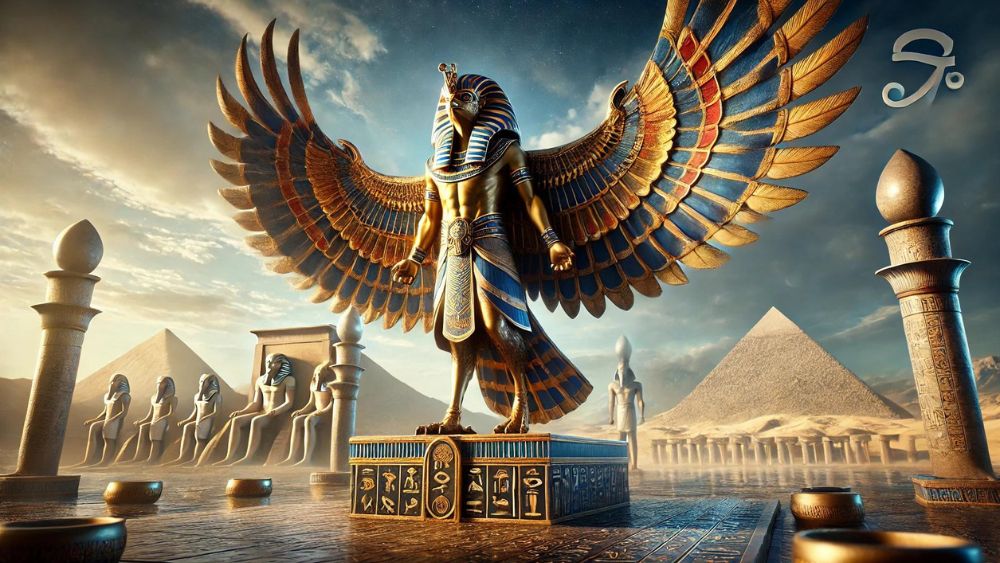
Horus, the falcon-headed god, is respected as the god of the sky and kingship, showing the traits of a careful guardian. Picture Horus as a strong protector; his watchful eyes look over the land and its rulers. His fights with Set, the god of chaos, show the constant battle between order and chaos, ending with Horus winning and bringing back harmony.
Horus gives the pharaoh divine power and strength, keeping the kingdom steady. His role is a big part of Egyptian culture; often he is drawn as a falcon or a man with a falcon’s head, standing for the sky’s heights and a ruler’s wide vision.
5. Set: The God of Chaos and Storms
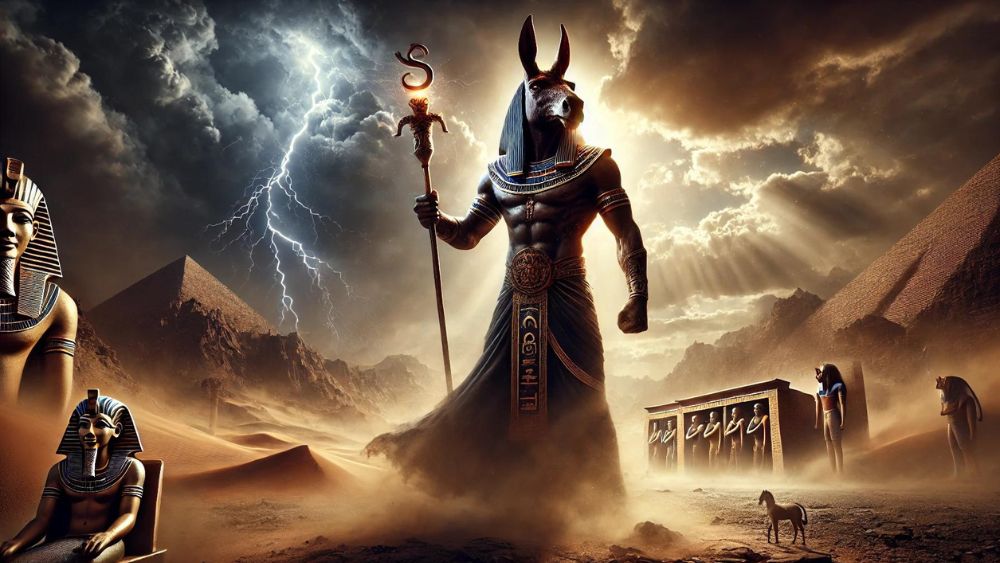
Set, the god of chaos, storms, and the desert, shows the wild and unpredictable sides of nature. Think of Set as a strong storm, which can break things and change them. He is the enemy in Egyptian stories, especially fighting with Horus, where he stands for disorder against Horus’s order. This long fight between Set and Horus shows the balance like chaos and peace, a main idea in Egyptian beliefs.
Set affects the harsh and empty desert, so different from the green Nile, pointing to his link with the hard parts of life. Set’s powerful side was also respected for being strong and unbreakable, making him a very complex god in the Egyptian group of gods.
Set, the god of chaos, represents the unpredictable forces of nature and symbolizes the struggle between disorder and order in Egyptian mythology.
6. Anubis: The Jackal-Headed God of Mummies
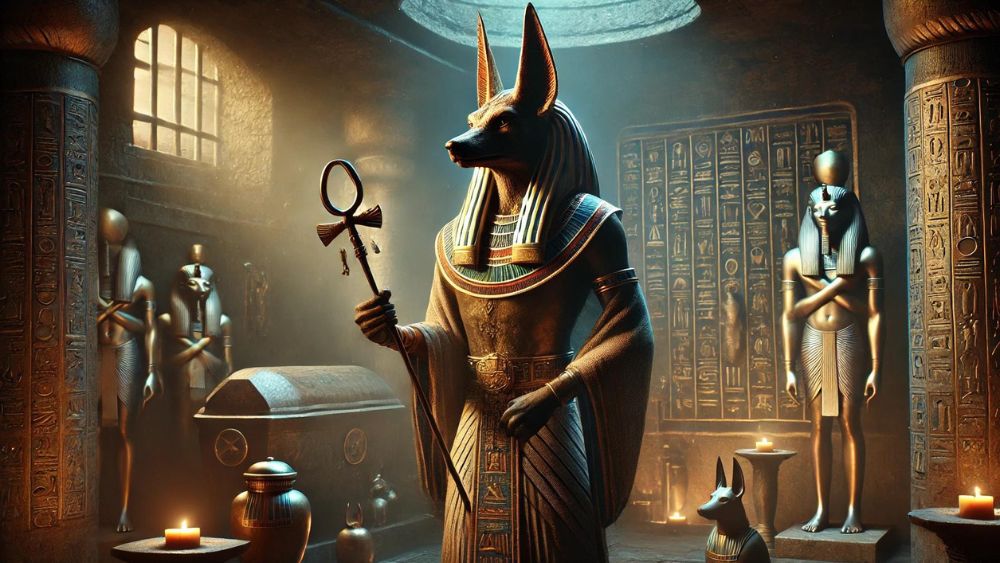
Anubis, the jackal-headed god, is closely connected to mummies and the afterlife, who watches over the dead. See Anubis like a careful watcher, making sure the dead are correctly made ready for their trip to the afterlife. His part in the embalming is very important; he is said to have started mummification and led the formal making ready of bodies.
In art, Anubis appears as a man with a head of a jackal, showing his link to graveyards and keeping graves safe. His role in death rites is deep; guiding souls through the underworld and making sure they pass safely, showing hope for eternal life and keeping the body safe for the next life.
7. Thoth: The Ibis-Headed God of Knowledge and Writing
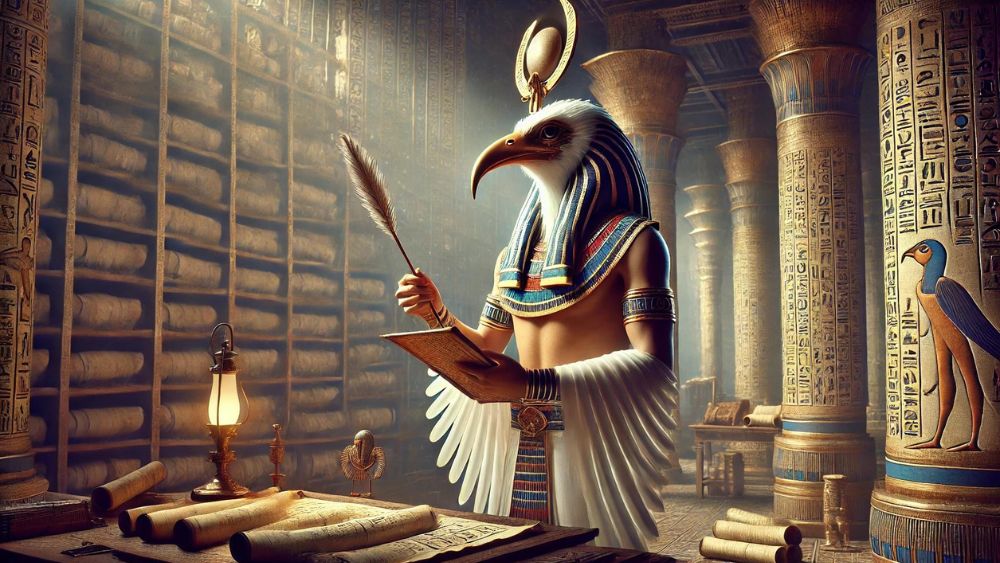
Thoth, the ibis-headed god, is respected as the god of wisdom, writing, and knowledge, showing the smart parts of old Egyptian life. See Thoth like a wise scholar, carefully noting down the universe’s events and giving knowledge to people. His deep help in making the universe matters a lot; he came up with writing and made up language so people could write down history and holy texts.
Thoth writes down the results of the weighing of the heart ceremony for the dead, making sure justice is done in the afterlife. Thoth is linked with the moon, showing his tie to time and the control of sky events, stressing his role in keeping the universe in order.
8. Hathor: The Goddess of Love, Music, and Happiness
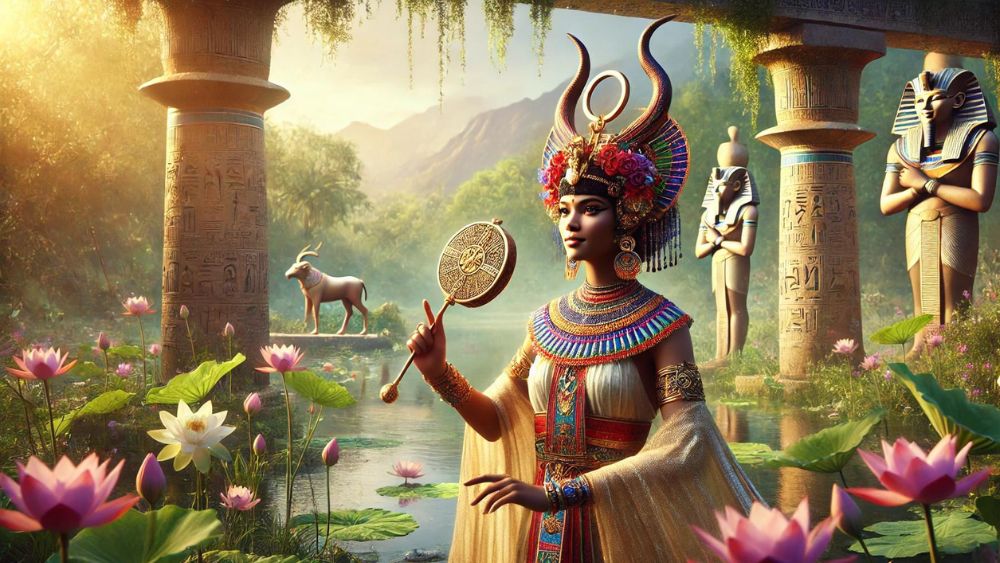
Hathor, the goddess of love, music, and happiness, is a big figure in Egyptian stories, showing the caring and happy parts of life. Think of Hathor like a muse. She makes people creative and happy. Her many roles include who keeps women safe, a supporter of music and dance, and a symbol of motherly care.
Hathor was respected in different places, such as Dendera and Thebes, where they held festivals and rituals to honor her happy nature. In Egyptian art, Hathor often appears as a cow or a woman with cow horns and a sun disk, showing her link to having babies and the sun’s life power. Her place in art and worship shows her importance in bringing love, music, and happiness to old Egyptian life.
9. Amon-Ra: The King of Gods and Patron of Thebes
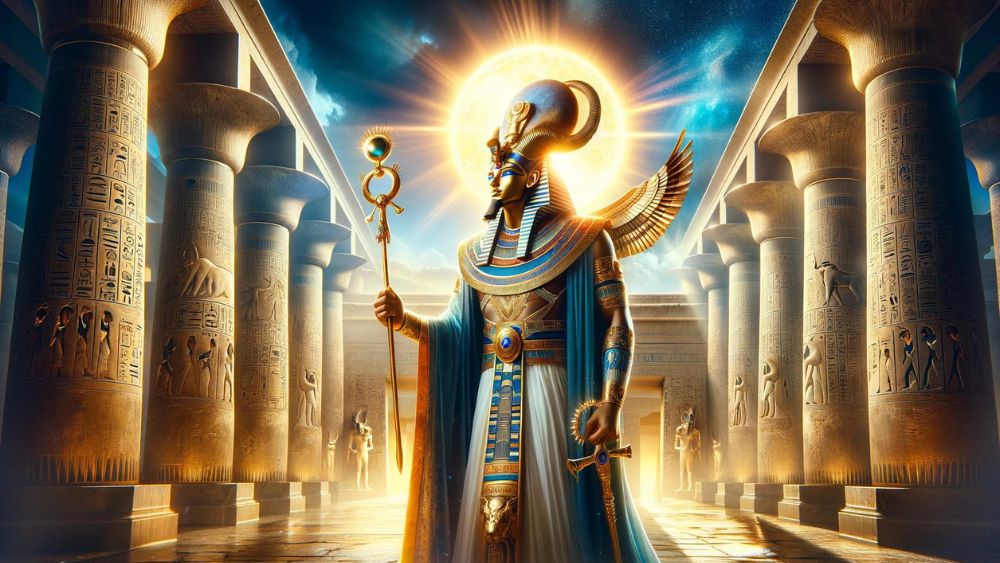
Amon-Ra, a strong joining of the gods Amon and Ra, stands as the king of gods in old Egyptian stories, showing the highest power and divine strength. Think of Amon-Ra as a strong king.
He brings different places together under his rule, showing his rise in the group of gods. His link with Thebes, who was the main god there, shows his importance in both religious and political areas. The big temples of Karnak and Luxor, made for Amon-Ra, show his influence and the love of his followers.
Amon-Ra’s impact on Egyptian religion is deep, as he shows the creative power of Ra, the sun god, and the secret, hidden parts of Amon. This made him a main figure in the worship and stories of old Egypt.
10. Ma’at: The Goddess of Truth and Justice
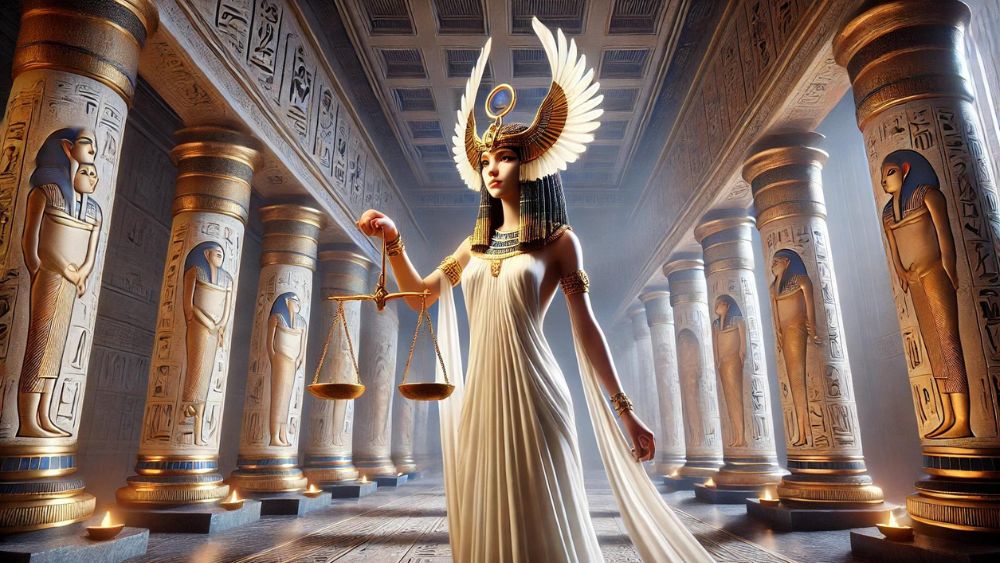
Ma’at, the goddess of truth, justice, and universe order, is a basic figure in old Egyptian stories, showing the ideas that keep balance in the universe. Think of Ma’at as a judge. She makes sure everything in the world is balanced and fair. Her role in keeping balance is very important, as she shows the rules that govern both the gods and humans.
Ma’at is shown as a feather against which the hearts of the dead are weighed to see if they were good, showing her role in keeping justice in the afterlife.
Her deep effect on Egyptian life is clear, as the idea of Ma’at touched all parts of life, from ruling to daily actions, stressing the importance of truth and justice in keeping social harmony.
11. Bastet: The Lioness Goddess of Protection
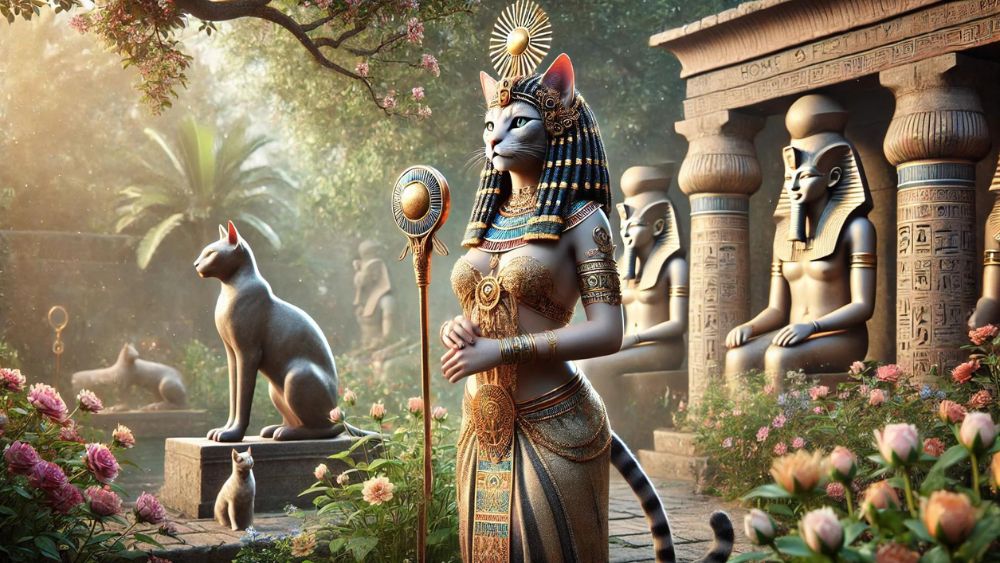
Bastet, the goddess of home, having babies, and protection, is a complex figure in old Egyptian stories, showing both the strong side of a lioness and the caring side of a house cat. Think of Bastet as a caretaker. She strongly guards her family and gives comfort and care.
Her two sides show in how she is shown: as a lioness, she means strength and fierceness, and as a house cat, she means grace and home life. People saw Bastet as a house protector, making sure homes were safe and could have babies.
Especially in Bubastis, her worship was big, and they had large festivals to honor her protecting and caring sides. Bastet’s reach went to every part of life, making her a well-loved and needed figure in the group of Egyptian gods.
12. Sekhmet: The Warrior Goddess of Healing
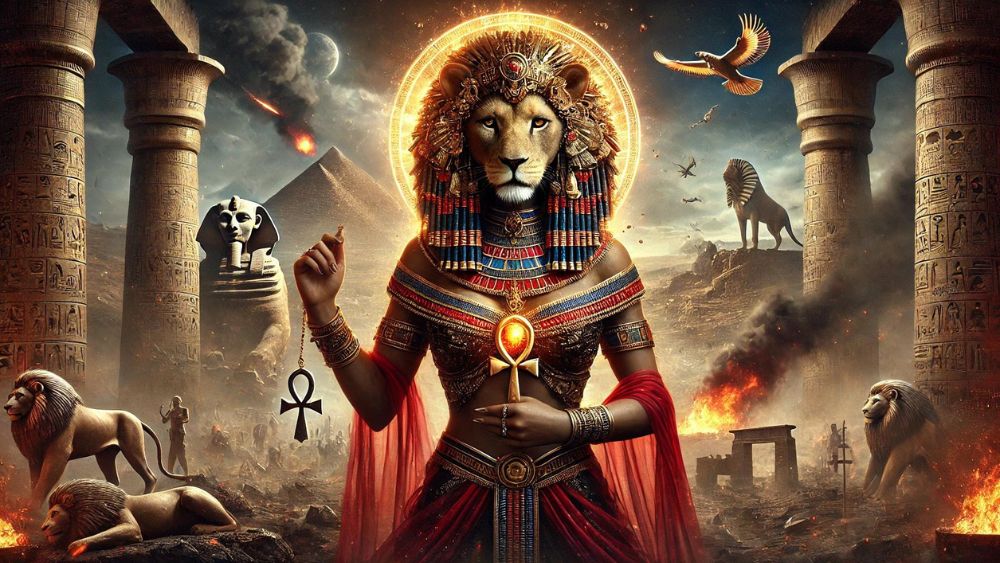
Sekhmet, the warrior goddess of war and healing, shows a special mix in old Egyptian stories, showing both destruction and making things better. Think of Sekhmet as a strong fighter. She sends sickness to her enemies but also heals and brings comfort. Her lioness shape shows her strong and fierce nature in fights. Beyond fighting, Sekhmet’s role includes healing; she was often called upon to cure sickness and stop plagues.
People everywhere in Egypt respected Sekhmet, with many temples for her, where they did practices and brought offerings to calm her anger and ask for her healing powers. This two-sided nature of Sekhmet shows her importance in keeping both harmful and helpful forces in the world.
13. Sobek: The Crocodile God of Strength and Power
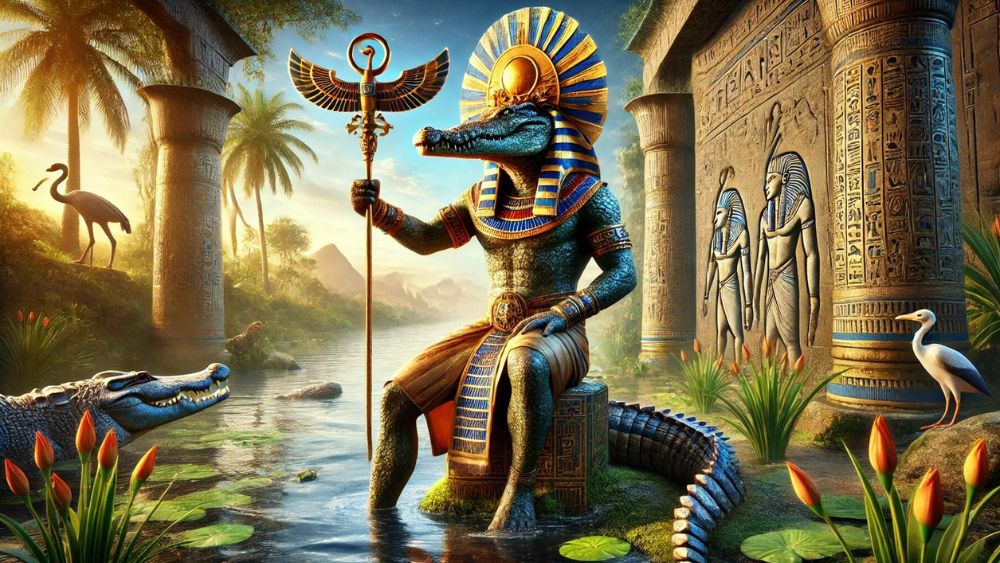
Sobek, the crocodile god of strength and power, is a tough god in old Egyptian stories, showing the might and wildness of the Nile’s most feared predator. Think of Sobek as a strong guardian. He earns respect and makes people scared, like a crocodile in the water. His link with power and strength is clear.
He guards the pharaoh, making sure the ruler is safe and strong. Sobek, with his link to crocodiles, shows he rules over the Nile; it is a key source of life and food for old Egypt. Worship of Sobek was well-known in the Faiyum area. Temples and practices there calmed and honored him, showing his big influence on both nature and the political scene.
14. Ptah: The Creator God and Patron of Craftsmen
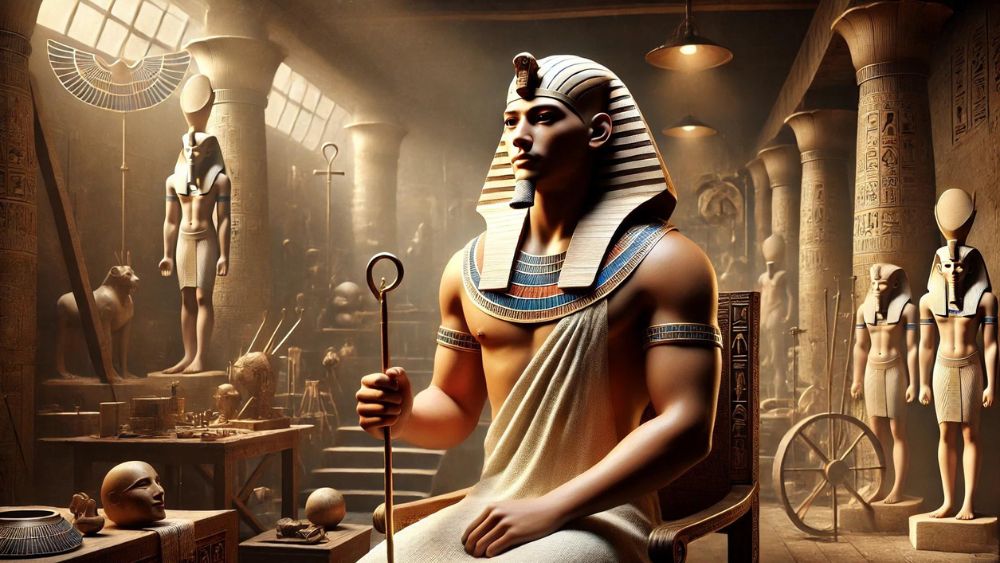
Ptah, the god of making things and craftsmanship, has a key role in old Egyptian stories as the heavenly builder who made the world. Think of Ptah as a master builder. He carefully plans and builds the universe. In the creation story, Ptah is said to have thought up the world with his speech, making life and order from chaos.
His link with workers and makers is deep because he is respected as their patron, making creativity and skill in their work. Worship of Ptah was centered in the city of Memphis, where he was chief god. Many temples and workshops were set up for him, showing how much he mattered in both spiritual and practical life in Egypt.
15. Nephthys: The Protective Goddess of the Dead
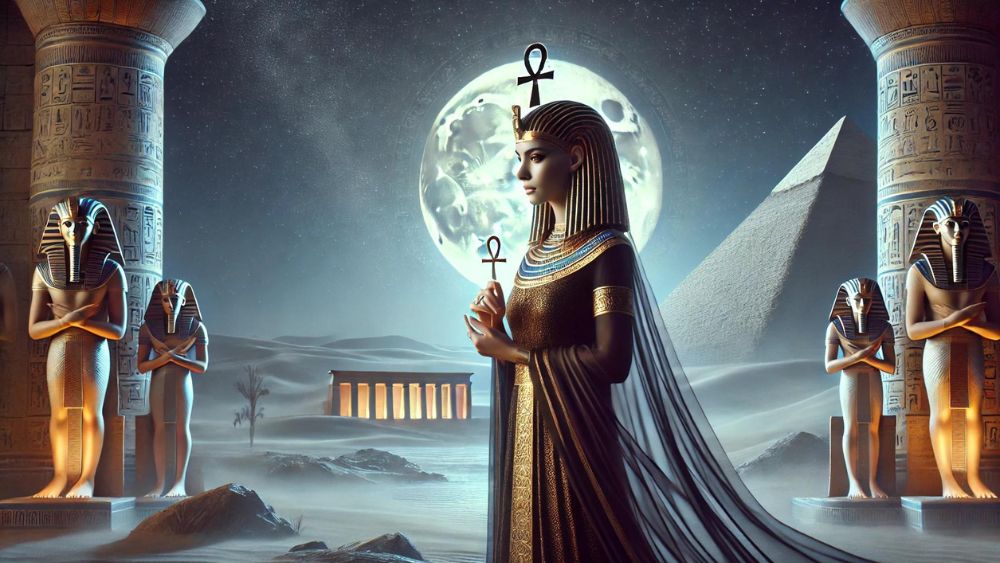
Nephthys, the protective goddess of the dead, has an important role in old Egyptian stories, especially dealing with the afterlife and burial practices. Think of Nephthys as a watchful guardian. She makes sure the dead get safely to the afterlife. Her protective nature is clear. In burial practices, she is often shown with her sister Isis, both working to keep the body of Osiris safe and help him come back to life.
Nephthys’s link with Isis and Osiris shows her key role in the story, showing she is a caring and protective figure. In Egyptian stories, she is often shown as a helpful presence, standing for the ideas of protection and caring for the dead, which were very important in old Egyptian thoughts about the afterlife.
FAQs
1. Who is considered the most powerful Egyptian god?
The most powerful Egyptian god is often considered to be Ra, the sun god and creator deity.
2. How did the ancient Egyptians worship their gods?
The ancient Egyptians worshipped their gods through various methods, including building temples, performing rituals, and making offerings.
3. What role did mythology play in ancient Egyptian society?
Mythology played a crucial role in ancient Egyptian society by influencing daily life, governance, and cultural practices.
4. How have Egyptian gods influenced modern culture?
Egyptian gods have influenced modern culture through their depiction in literature, film, and popular media.

